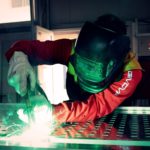 It’s commonly estimated that the cost of replacing an employee is around 6-9 months of their salary. This underlines the importance of providing an environment that encourages employees to stick around. The value of a stable workforce was reiterated by a recent study from Wharton, which aimed to measure the impact employee turnover had on the output of a Chinese smartphone manufacturer.
It’s commonly estimated that the cost of replacing an employee is around 6-9 months of their salary. This underlines the importance of providing an environment that encourages employees to stick around. The value of a stable workforce was reiterated by a recent study from Wharton, which aimed to measure the impact employee turnover had on the output of a Chinese smartphone manufacturer.
The researchers were interested in tracking the failure rate of the 50 million or so phones produced by the company over a four-year period. When each device failed, they were able to track it back to the precise time and location where it was assembled, as well as understand the staffing levels and factory conditions at the time.
Turnover matters
With this, the researchers were able to discover that turnover does matter. Indeed, each percentage increase in the turnover of workers resulted in an increase in the product failure rate of nearly 0.8%.
Interestingly, the failure rate was 10% higher for devices that were made in the week after payday when there was high turnover. The costs of this added up to hundreds of millions of dollars. The researchers believe their work is the first to explicitly link employee turnover to product reliability, and really emphasize the importance of employee engagement in both training and recruitment efforts.
“That’s the wrong way to think about it,” they explain. “When you have a lot of turnover, you may be able to replace people easily and quickly, but a team is still more than the sum of its parts. Workers on an assembly line aren’t necessarily collaborating in a deep way, but their work does affect other stations. Their ability to coordinate is more important than we think.”
They hope that their work underlines the commercial benefits of improving working conditions, raising compensation, and generally trying to make work an enjoyable place for employees, as this translates directly into the bottom line of the business.
“What we find from the data is that if you take an experienced person who left the line and find an equally experienced person and plug them in, it’s actually disruptive. That person who left has some knowledge that’s not easily replaced,” they conclude. “Even though an assembly line is not a deeply collaborative workplace, there is still a need to coordinate with those around you. And that matters.”